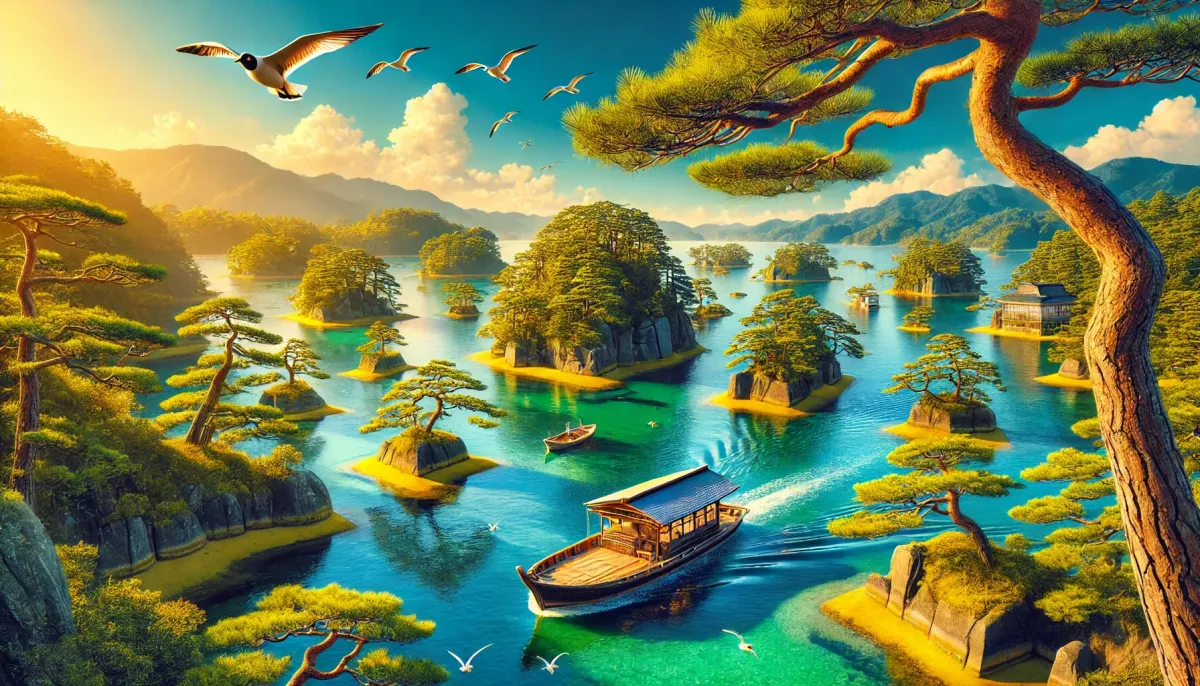Hey everyone, Mark here! I’m back with another travel adventure, this time diving deep into the heart of Japan. As a seasoned backpacker with a love for Asian culture and history, I've explored countless breathtaking destinations. But my recent trip to Japan left an indelible mark. This isn't just another travelogue—it's a glimpse into the soul of a country rich in tradition, natural beauty, and spiritual depth. Get ready to discover hidden gems, experience ancient rituals, and savor the magic of Japan.
Exploring the Sacred Grounds of Shiogama Jinja Shrine
My journey began at Shiogama Jinja, a renowned shrine with a history stretching back centuries. I was immediately struck by the sheer scale and meticulous planning of the shrine's grounds. The current structure, the fourth generation, was commissioned by Date Masamune in the 16th century, a significant figure in Japanese history. Later, in the 17th century, Date Yoshimune oversaw further renovations and additions. The stone torii (gate), a rare sight, immediately caught my attention – a testament to the shrine's age and enduring significance.
I noticed the shimenawa (sacred straw rope) draped across the shrine, a common sight in Japanese religious sites. These ropes, often adorned with shide (paper streamers), mark off sacred spaces. The shimenawa at Shiogama Jinja were particularly striking, highlighting the shrine's spiritual power. Post-war regulations have led to the use of rice and wheat stalks instead of hemp in many shimenawa, a detail that adds another layer to their history.
Unveiling the Significance of Shimenawa and 753
Here's a quick summary of what I learned about shimenawa and the unique 753 designation:
| Feature | Description |
|---|---|
| Shimenawa | Sacred straw ropes marking off sacred spaces, often decorated with shide streamers. |
| 753 | A designation found on some shimenawa, potentially linked to a specific ritual or deity. |
| Material | Traditionally hemp, now often rice and wheat stalks due to post-war regulations. |
| Purpose | To delineate sacred spaces and invite divine presence. |
Shiogama Jinja: A Historical and Spiritual Hub
This shrine, sometimes also called Shiogama Jinja (the character 竈 is difficult to type!), boasts a history tracing back 1200 years. It's the head shrine for over 100 other Shiogama shrines across Japan. It’s fascinating to consider that within the same grounds, you find both the Shiogama and Shibahiko shrines, similar to the arrangement at Kotohira-gu Shrine in Kagawa Prefecture. The shrine holds a prominent place in the history of Northeast Japan, a region renowned for its rich culture and stunning natural landscapes. I also learned that during the Meiji period, it became the location for the enshrinement of the Shibahiko-ōkami deity.
A Journey Through Japanese Buddhism
My exploration of Shiogama Jinja wasn’t just about the shrine itself; it offered a pathway to understanding Japanese Buddhism. While not a practitioner, I found the blend of Shinto and Buddhist practices intriguing. I was surprised to learn that, despite nearly 90 million people identifying as Buddhist, the religion doesn't significantly impact daily life in the same way it does in other parts of the world. The religion is incorporated into many aspects of life, not as a rigid set of rules, but as a way of being and a cultural foundation. Its integration into daily life is subtle yet deeply ingrained. The temple holds numerous national treasures, showcases remarkable craftsmanship in lacquerware, woodcarving, and metalwork, and reveals a fascinating glimpse into the history of Japanese Buddhism.
The Exquisite Beauty of Matsushima Bay: A Must-See Destination
My adventure continued to Matsushima Bay, one of Japan's three scenic views. The description in Kokushi Ritsukō, an ancient text, perfectly captured the essence of its beauty. The bay’s two hundred and sixty islands, almost all adorned with pines, create a stunning panorama. The sheer number of pine trees—the literal translation of Matsushima is "Pine Islands"—is just remarkable.
I took a boat tour, experiencing the breathtaking view of these pine-covered islets up close. The experience was enhanced by the numerous seagulls that flocked to the boat, eagerly anticipating being fed shrimp—a local custom. This area also boasts famous oysters, adding to the delicious culinary side of my journey. I learned that the oyster harvest season runs from autumn to March, making it a seasonal treat. I couldn't resist indulging in some fresh oysters—and I tried everything from raw to fried, showcasing the diversity of Japanese cuisine.
The Legacy of Date Masamune: A Warlord's Story
My trip wouldn’t have been complete without learning about Date Masamune, a prominent figure in Japanese history. His ambition and strategic brilliance shaped the history of Tohoku. While he ultimately submitted to Toyotomi Hideyoshi, his actions revealed both cunning and a desire for autonomy, showcasing the complexity of this powerful leader.
Exploring the Five Great Kings Hall (Godai-dō): A Blend of History and Spirituality
The visit to Godai-dō, a Buddhist hall located in Matsushima Bay, further enriched my cultural experience. Built in 807 AD, the existing structure, rebuilt in the 16th century, represents some of the oldest architecture in Tohoku and a beautiful example of Momoyama-style architecture. The hall's connection to the Five Great Kings (Godai Myōō), Buddhist deities originating from India, added to the spiritual significance of my visit.
Discovering the Architectural Wonders of Japan: From Ancient Shrines to Modern Marvels
My trip concluded with explorations of other architectural marvels in the region. The stunning architecture, whether the serene temples or the modern structures, all reflect Japan's rich history and cultural identity. It showcased the unique blend of traditional and modern styles in Japanese architecture. The temples, like Chūson-ji Temple with its incredible collection of national treasures, are stunning examples of Japanese architectural heritage.







